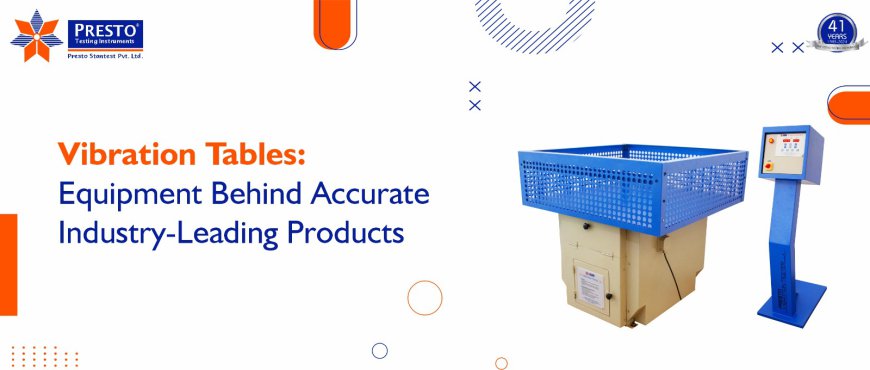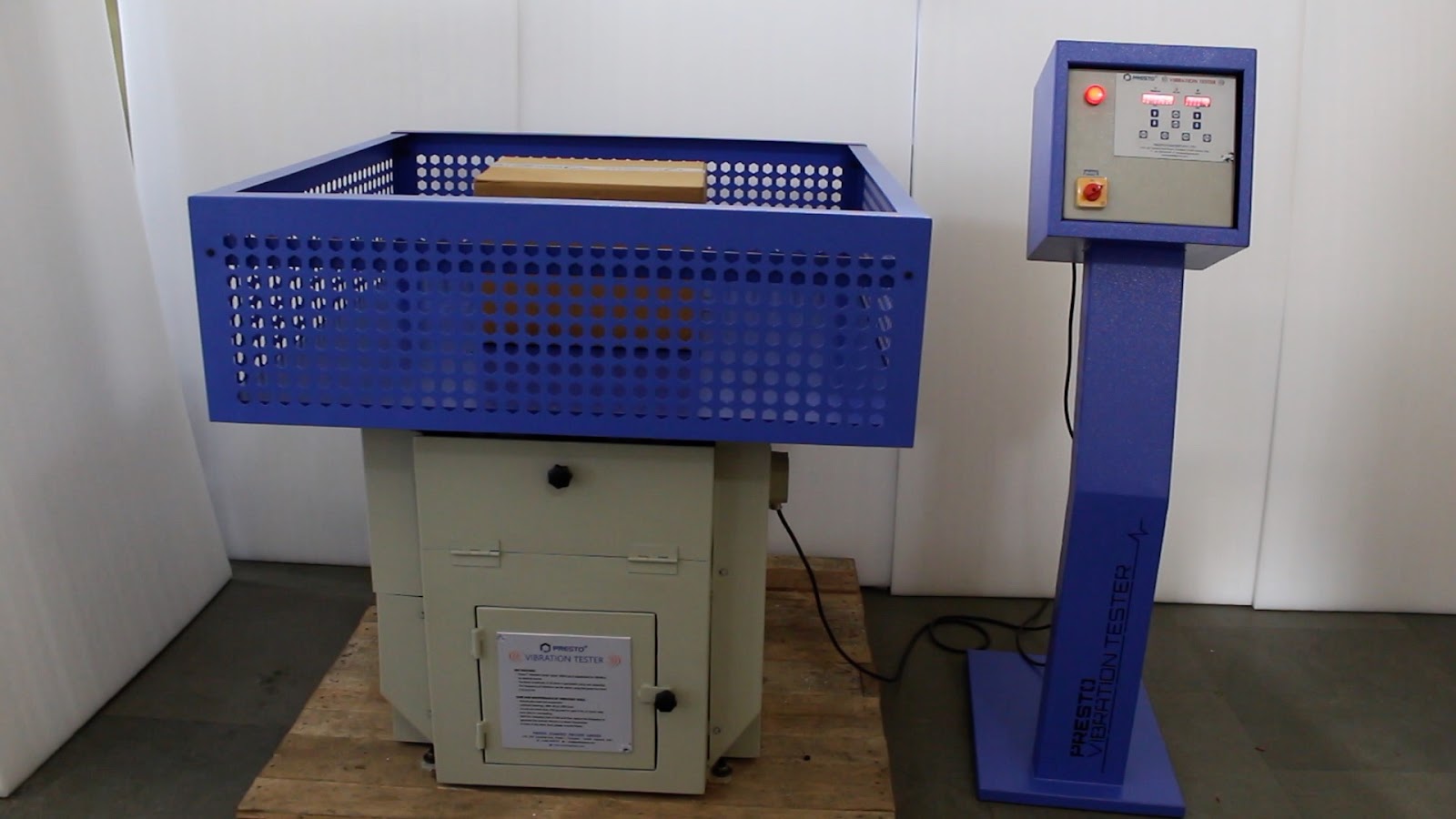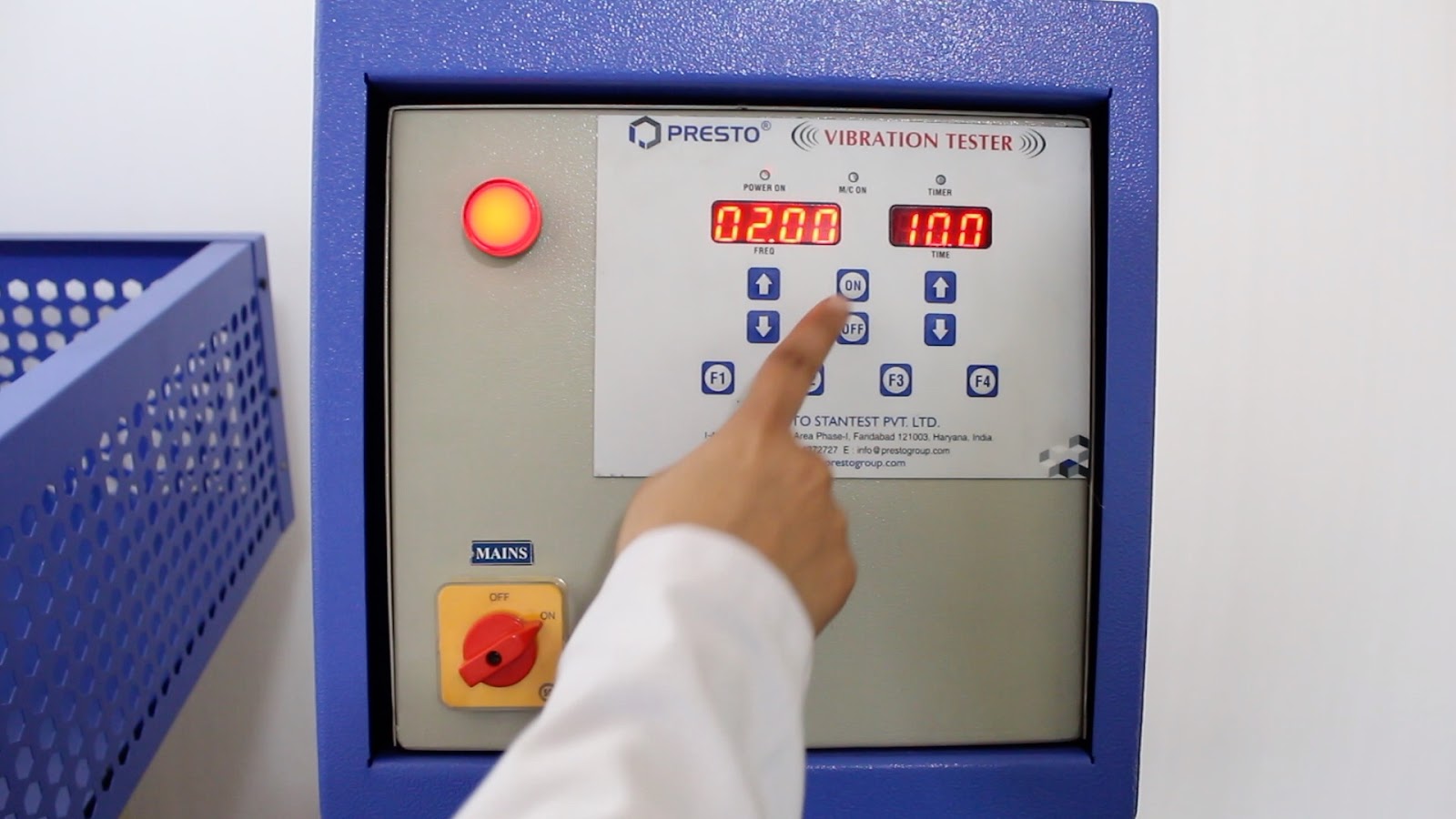Vibration Tables: Equipment Behind Accurate Industry-Leading Products
In industries where high precision and reliability are paramount, vibration testing becomes indispensable in ensuring that products can withstand or hold up to the rigours of real-life use.

In industries where high precision and reliability are paramount, vibration testing becomes indispensable in ensuring that products can withstand or hold up to the rigours of real-life use. Be it automotive parts, electronics, construction materials, or packaging, vibration tables come into the mainstream in simulating harsh conditions that products may face in the course of transport or operation. If you are considering deciding on purchasing a vibration table for your facility, you would like to know the design, specifications, how to maintain it, and the cost implications for a better-informed decision.
In this blog post, we explore the world of vibration tables—examining their purpose, technical specifications, key considerations when selecting a manufacturer, and best practices in ensuring your testing equipment yields accurate, repeatable results. If you are searching to purchase a vibration table or want to understand how this technology works, start with this fantastic, comprehensive guide.
What is a Vibration Table?
A vibration table, a shaker table, or a vibration test system, is an apparatus designed to simulate the conditions that a product might encounter in transit or during service. It is usually applied to product testing and quality assurance, besides research on materials, for automobile, aerospace, electronics, packaging, and construction industries.
 Vibration tables are mainly used for:
Vibration tables are mainly used for:
Testing products: To check if products can survive shock conditions of transportation, handling, or in-service applications.
Testing on materials: Checking the response of materials under such conditions of vibration.
Research and development: Prototyping a test under simulated conditions of in-service use.
Moreover, the flat rigid platform is supported by an oscillating system that can provide motion in the form of various vibrations like random vibrations,, sine waves, or shock impulses. Through the vibration table, manufacturers and researchers can test their products or materials under controlled stress and assess their durability, performance, and reliability.
Vibration Table Design and Working Principle
Vibration Generation Mechanism:
The most common mechanism used in the generation of vibration is the electrodynamic shaker, and hydraulic actuators, are also available. These methods can generate wide ranges of frequencies and amplitudes to simulate a variety of environmental conditions.
Platform:
This is designed to withstand high frequencies and mechanical forces caused by the process of vibration.
Control System:
A control system enables users to input vibration parameters such as frequency amplitude, and waveform. The system also gives feedback to ensure that the table operates within the set limits.
The working principle behind vibration tables involves generating sinusoidal, random, or shock vibrations on the table platform. These vibrations mimic the various stressors a product may encounter, such as shipping vibrations, operational conditions, or extreme environmental scenarios.
Key Technical Specifications of a Vibration Table
Before buying a vibration table, it is important to understand the technical specifications that define the capabilities of performance. Some of the key specifications are given below:
-
Maximum Load Capacity: 100 kg
-
Display: LED (Digital)
-
Standard Table Size: 800 x 800 mm
-
Amplitude: 25 mm peak-to-peak
-
Power Supply: 220V, Single Phase, 50 Hz
-
Frequency Range: 2 Hz to 6 Hz
-
Angle Adjustment (Swivel Model): 0º, 30º, 60º, 90º
Dos and Don'ts for Vibration Table Usage
Dos
-
Do the calibration routine: Calibration ensures that the table's performance is within its design parameters to give accurate and reproducible results.
-
Do as per the manufacturer guidelines on load capacity: Never allow the product under test to exceed the weight limit of the vibration table.
-
Do check for proper setup: Ensure the test object is firmly placed on the platform so that during testing, it does not get shifted or damaged.
-
Do keep the vibration table clean and check for mechanical faults before use to prevent deterioration of the performance.
-
Do use vibration isolation systems: Install vibration isolators that can minimize the transmission of vibration to the surrounding environment, thereby ensuring precise test results.
Don’ts
-
Avoid overloading the vibration table: Its excessive use can damage the system and render the test outcome inaccurate.
-
Use the machine only after training: Only personnel trained in the safe operation and usage of the vibration table should use it.
-
Avoid safety measures: Carry protective equipment into the test room and restrict access by noncurrent personnel.
-
Do not disregard the noise and vibration sounds: When a vibration table acts abnormally with unusual noises or erratic behaviour, switch it off and follow an appropriate checkup.
-
Do not miss your routine servicing: Failure to service the vibration table properly might lead to breakdown in performance and compromise the integrity of the test results.
Maintenance Tips for Vibration Tables
To prolong the life span of your vibration table, regular maintenance is essential and ensures that your table functions at peak performance. Here are a few maintenance tips:
-
Alignment: The shaker system and platform shall be properly aligned so that there isn't uneven vibration. Miscare could be carried out to make the test less accurate.
-
Lubricate table moving parts: Lubricate regularly to minimize friction and wear and tear on the table's moving parts.
-
Analyze the actuators: Check the wear signs of actuators. Hydraulic or electrodynamic performance shall be proper.
-
Clean the table surface: Vibrations may lack consistency because of dirt and debris; thus, ensure the table surface is kept free of contaminants.
-
Temperature control: Overheating could destroy the internal parts of the vibration table. Always maintain it within the recommended range to avoid endangering the performance.
 Vibration Table Cost, and Buying Tips
Vibration Table Cost, and Buying Tips
Many factors determine the vibration table cost, these include size, capacity load, range frequency, and the manufacturer's reputation. The following factors must be considered:
Price of Vibration Table: this can range from a few thousand dollars for small and most basic, but tens of thousands for the large model. The cost will also depend upon custom features, precision, and table performance capabilities.
Vibration Table Design: if you have specific requirements, you can design customized vibration tables to meet particular requirements needed for the testing, such as multifunction multi-axis vibration or exposure to specific environmental conditions.
Select a Manufacturer: Collaborate with a genuine vibration table manufacturer that provides significant support and warrants as well as calibration services. Make sure that the equipment is supported by good after-sales service and follows the appropriate industry standards.
FAQs
1. What type of industry makes use of vibration tables?
Applications of vibration tables are seen in industries such as automotive, aerospace, electronics, packaging, construction, and material science, where the strength of products or materials under vibration has to be tested.
2. How long is a vibration test?
The duration of the vibration test would depend upon the selected testing parameters for the test but may vary anywhere from a minute to several hours.
3. Can vibration tables simulate real-life conditions?
These also simulate much closer to real natural vibrations of transport, operational wear, and stresses created by different extreme environmental conditions, providing truthful insights into how products may perform in the field.
Contact us for more information like Buy and Price, Technical Specifications, Cost etc.
Mail: info@prestogroup.com
Phone: +919210903903

 bottletesting01
bottletesting01